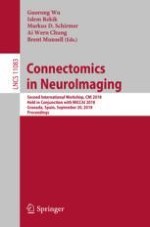2018 | OriginalPaper | Buchkapitel
Data-Specific Feature Selection Method Identification for Most Reproducible Connectomic Feature Discovery Fingerprinting Brain States
verfasst von : Nicolas Georges, Islem Rekik, for the Alzheimers’s Disease Neuroimaging Initiative
Erschienen in: Connectomics in NeuroImaging
Aktivieren Sie unsere intelligente Suche, um passende Fachinhalte oder Patente zu finden.
Wählen Sie Textabschnitte aus um mit Künstlicher Intelligenz passenden Patente zu finden. powered by
Markieren Sie Textabschnitte, um KI-gestützt weitere passende Inhalte zu finden. powered by
